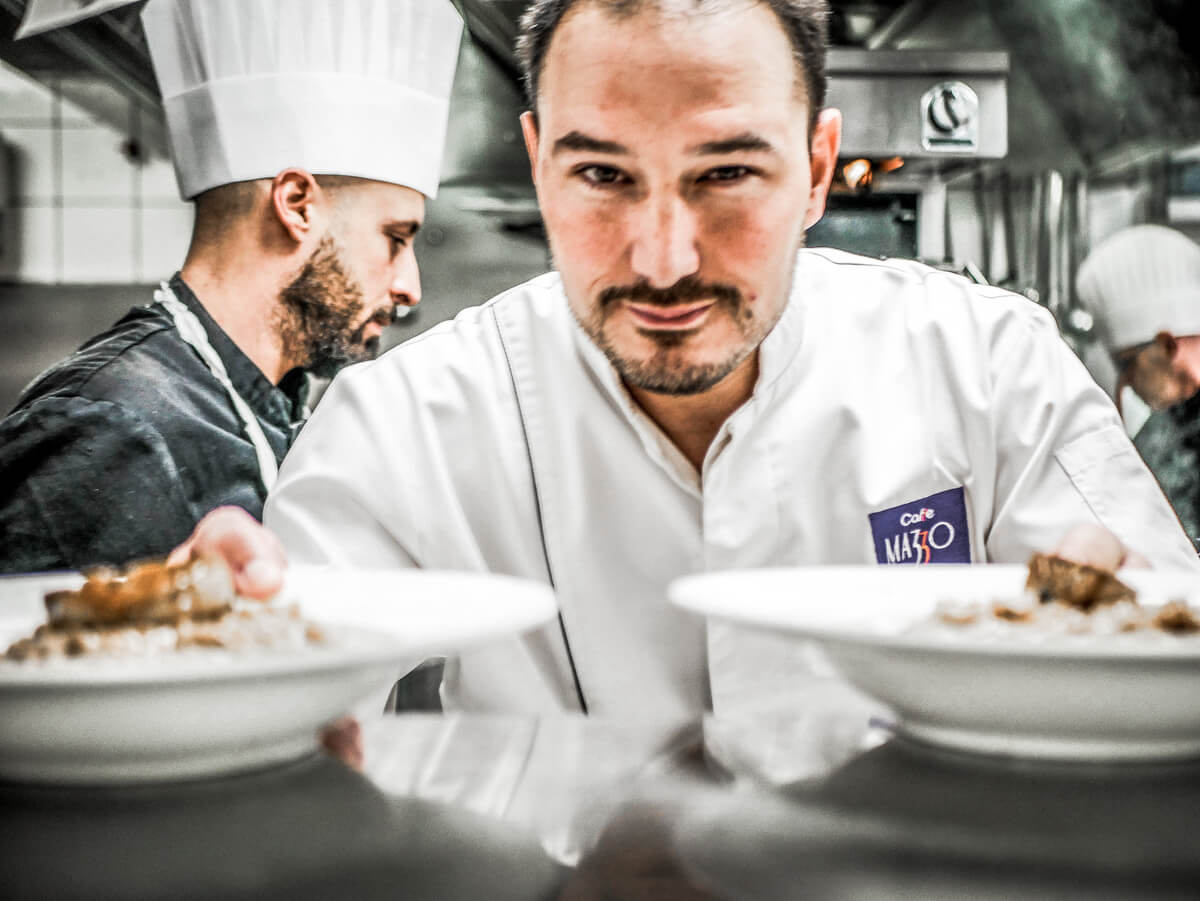Workplaces without any kind of physical strain are few and far between. Whether sitting or standing for long periods of time, repetitive movements or handling loads by lifting, carrying or pulling heavy objects – various factors can affect the human musculoskeletal system. In the long term, this can lead to various musculoskeletal disorders. This means sick leave and ultimately financial drawbacks for employers.
Kitchen ergonomics: investment that pays off
No wonder, then, that companies are looking for ways to minimize or even prevent such absences. Ergonomics is an effective solution to this problem. In other words, the science of designing humane working and environmental conditions. The aim is to optimize working conditions and processes in terms of space and time in such a way that people suffer as little fatigue or injury as possible in the course of their work over the long term. A properly set up workstation is designed to reduce physical strain and increase productivity at the same time.
This also offers financial advantages, as a large-scale study by the German Social Accident Insurance (DGUV) in 2012 revealed. Although it was carried out more than 10 years ago, this is still the most recent international study about return on prevention and is therefore still used today. According to the study, every euro invested in preventive health and safety measures saves an average of 2.20 euros in costs due to employee injuries or illnesses.
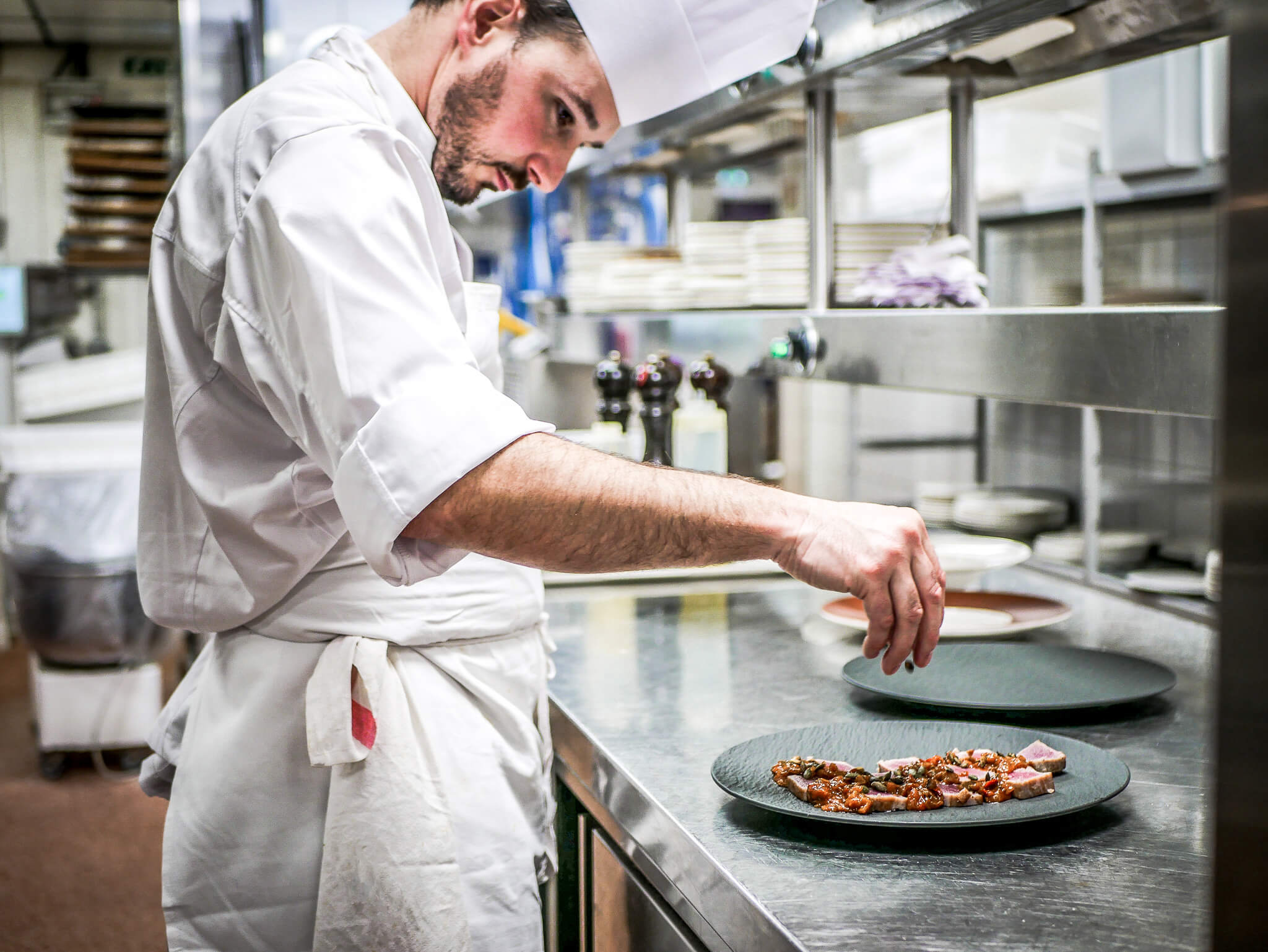
Sylvain Crepet | Image: Caffe Mazzo
Professional kitchens: ergonomics is a must
Whether in Europe, North America or Asia, professional kitchens in particular form a working environment where investments in ergonomics and therefore in the health of employees make sense in the long term. This is something Julia Lebersorg, Ergonomics Expert at the Austrian General Accident Insurance Association AUVA, knows all too well. She says, “Standing for long periods with your upper body constantly leaning forward is one of the biggest risks for your intervertebral discs, muscles, tendons and joints.”
From an ergonomic point of view, individually height-adjustable work surfaces and equipment are particularly helpful. “The rule of thumb is a working area 15 centimeters (6 inches) below elbow height when cutting food. But it also depends on the type of activity. If you work with more force, the work surface should be lowered a little. However, if you’re doing fine precision work and perhaps need to better see what you’re doing, the surface should be raised.”
Ergonomic work with adjustable kitchen systems
At Rational AG, the search for the highest possible benefit from kitchen systems and the best solutions for everyday work has been “the guiding principle of our actions for more than 50 years,” says Christoph Offenberg, iVario Marketing Director. “That’s why all our products deliver greater flexibility, efficiency and sustainability when it comes to kitchen challenges.”
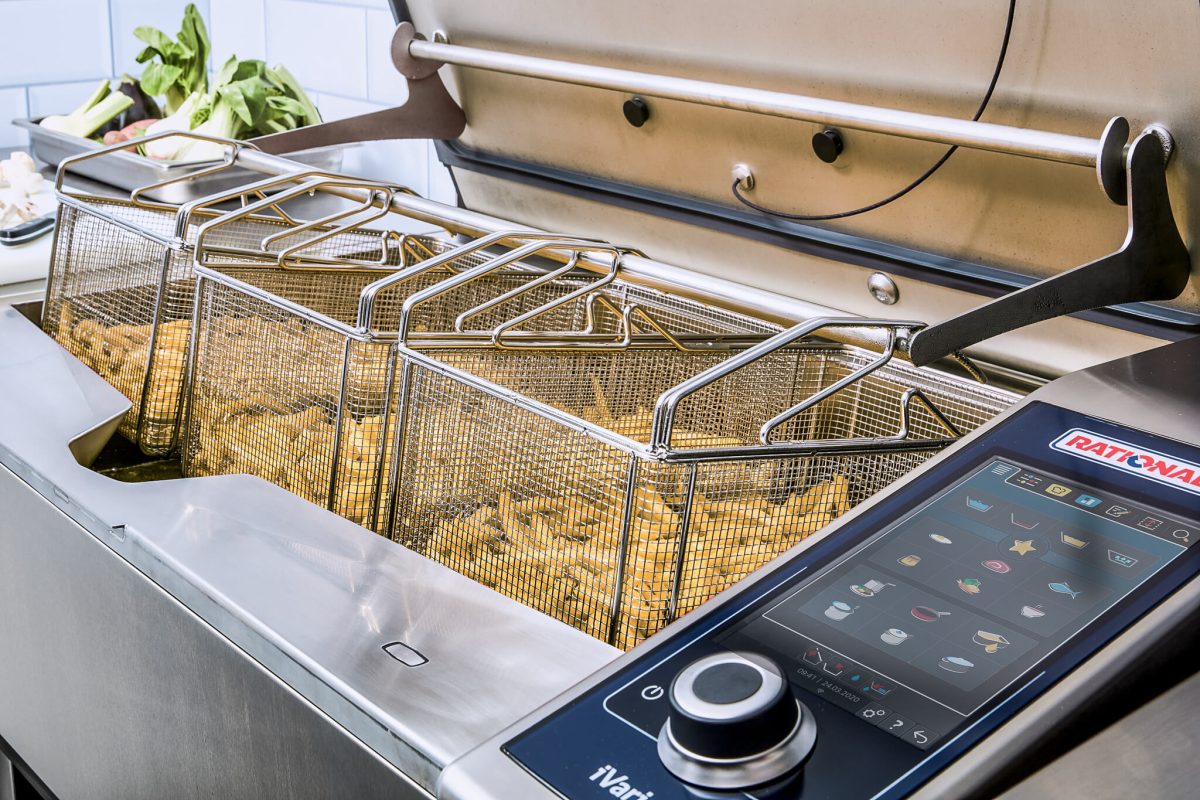
Image: Rational AG
During product development, that’s why special attention and focus is devoted to ergonomic aspects in the professional kitchen and preventing risk factors. As a result, all iVario cooking systems, regardless of size, are equipped with a variety of product features designed to ensure modern working in the kitchen, emphasizes Offenberg. “For example, our .”
In addition, every iVario can be equipped with a a 200 millimeter (7-inch) electronic height adjustment. “In other words, the working height can be individually adjusted to the height of the employee. This improves ergonomics in the kitchen, not just during long or repetitive tasks such as stirring 150 liters of pudding, but also when cleaning pans.”
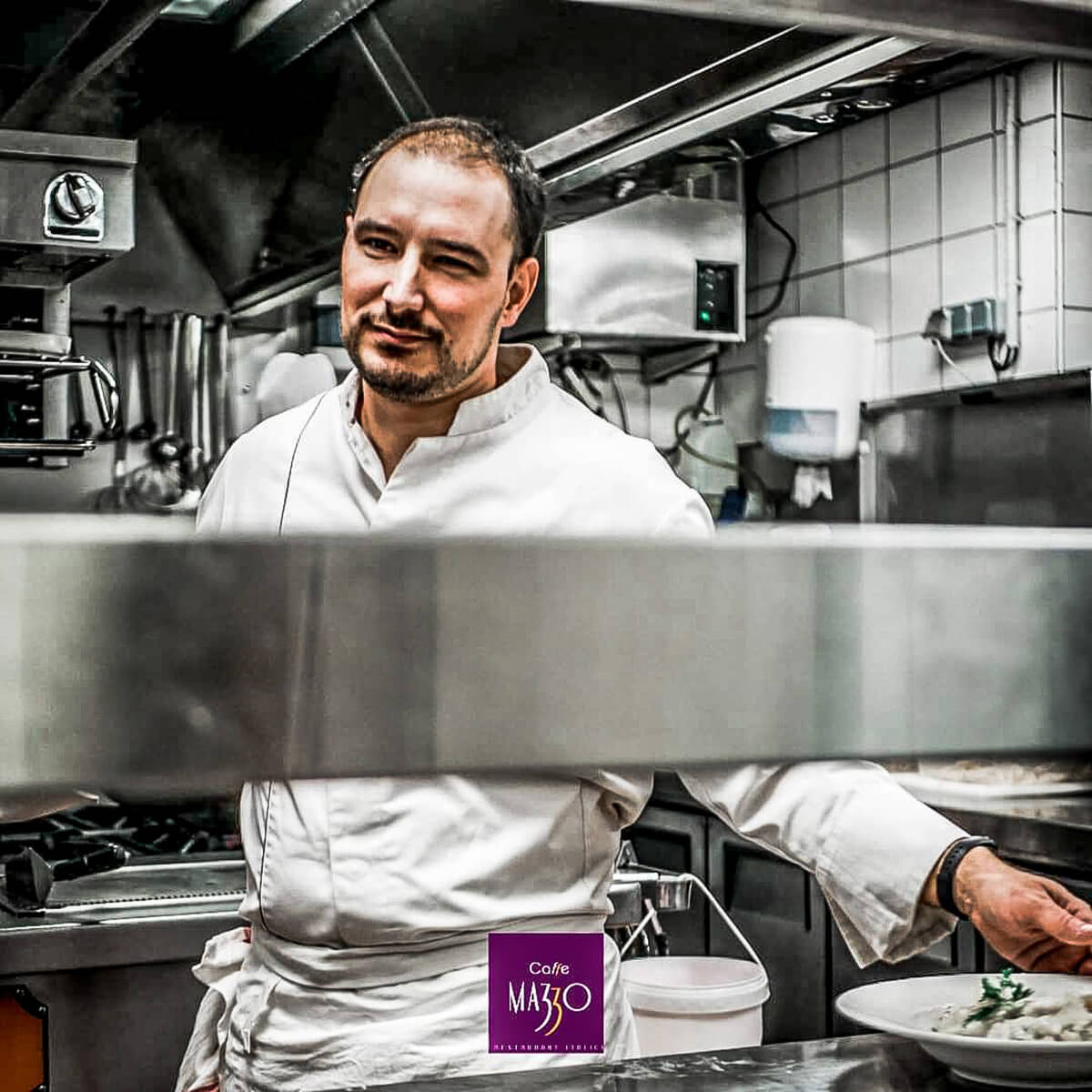
Sylvain Crepet | Image: Caffe Mazzo
Productivity instead of pain
That’s enough theory for now. Sylvain Crepet, chef at Caffe Mazzo in Clermont-Ferrand, central France, three train hours south of Paris, knows the positive impact ergonomics can have on everyday gastronomy. “When we remodeled our kitchen, we paid particular attention to the technical capabilities of our new cooking systems to ensure that they benefit the health of our employees. In fact, they have actually suffered less pain in their lower back and cervical spine since them – and have been much more productive.”
At Caffe Mazzo, Sylvain Crepet and his 15-strong team of chefs create modern interpretations of freshly prepared Italian specialties using local produce. For their efforts, they have been awarded the Maître Restaurateur seal of quality. The 43-year-old Frenchman, who has been working at Caffe Mazzo for 17 years, relies on two six-stage iCombi-Pro ovens and two other state-of-the-art multifunctional cooking systems from RATIONAL, specifically the iVario Pro L with a capacity of 100 liters and the iVario Pro 2-S with two 25-liter containers.
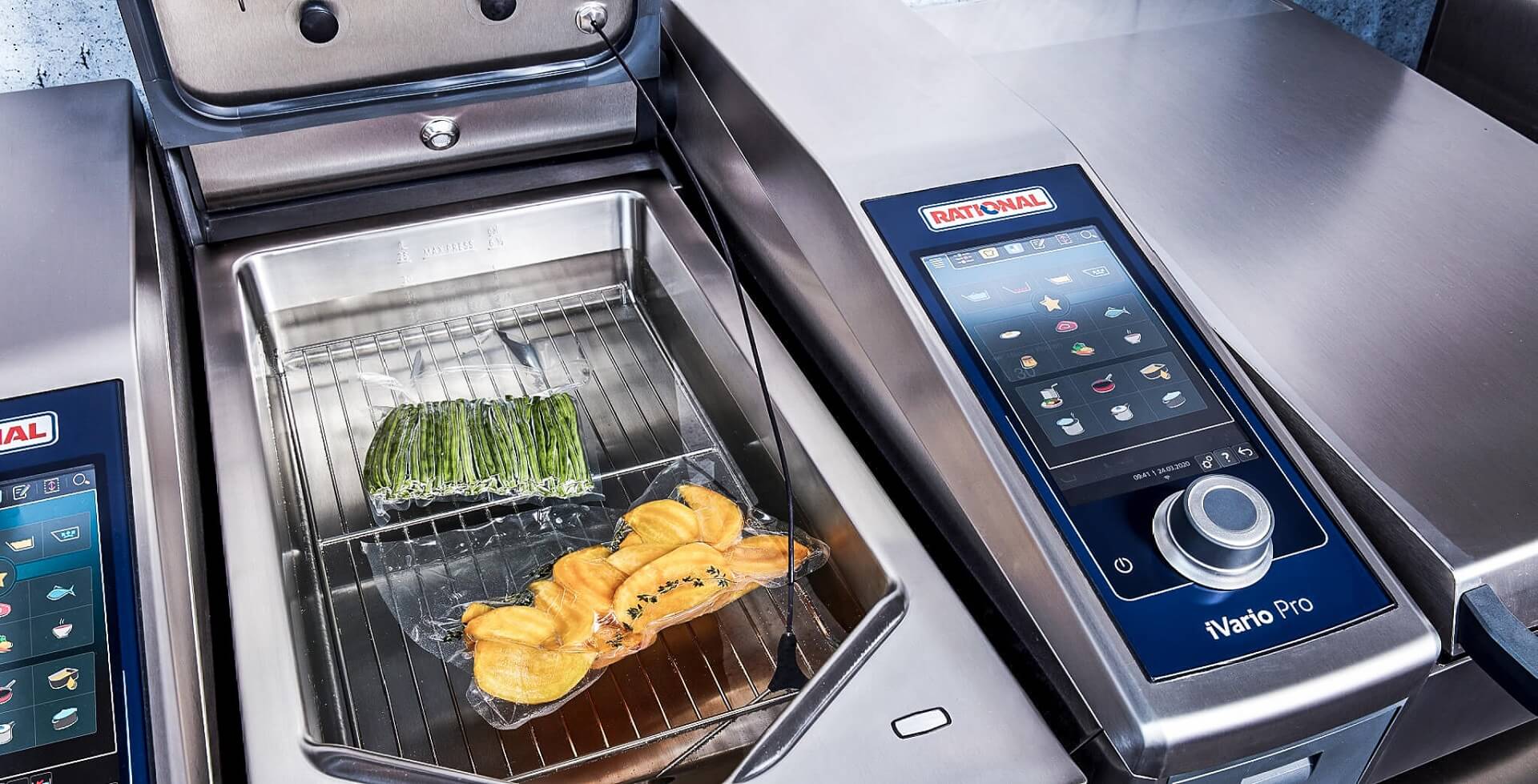
Image: Rational
Ergonomics in the kitchen means movement instead of immobility
These versatile cooking systems simplify and speed up everyday processes, says Crepet. They have made it possible to do without 80 percent of the previously used as deep-fat fryers, pots and pans. Last but certainly not least, this brings financial advantages. “Apart from the fact that we use our dishwashers significantly less, which saves water and detergent, the remodeling has also enabled us to cut down on distances. This means our employees no longer have to carry the sometimes heavy loads as far.”
While shortening the distances themselves is not necessarily an advantage from an ergonomic point of view, Mag reminds Lebersorg that, “It makes sense to interrupt static work with a little movement in between.” However, this involves movement that does not put a strain on the kitchen staff because of heavy loads. When it comes to ergonomics, a lot seems to depend on the intensity and duration of the activity. “For predominantly monotonous standing work, it helps if you can alternately rest your feet on a cross strut. Taking a short walking break in between can also help reduce the strain.” After all, movement is still the best remedy for immobility – perhaps especially in the kitchen.


